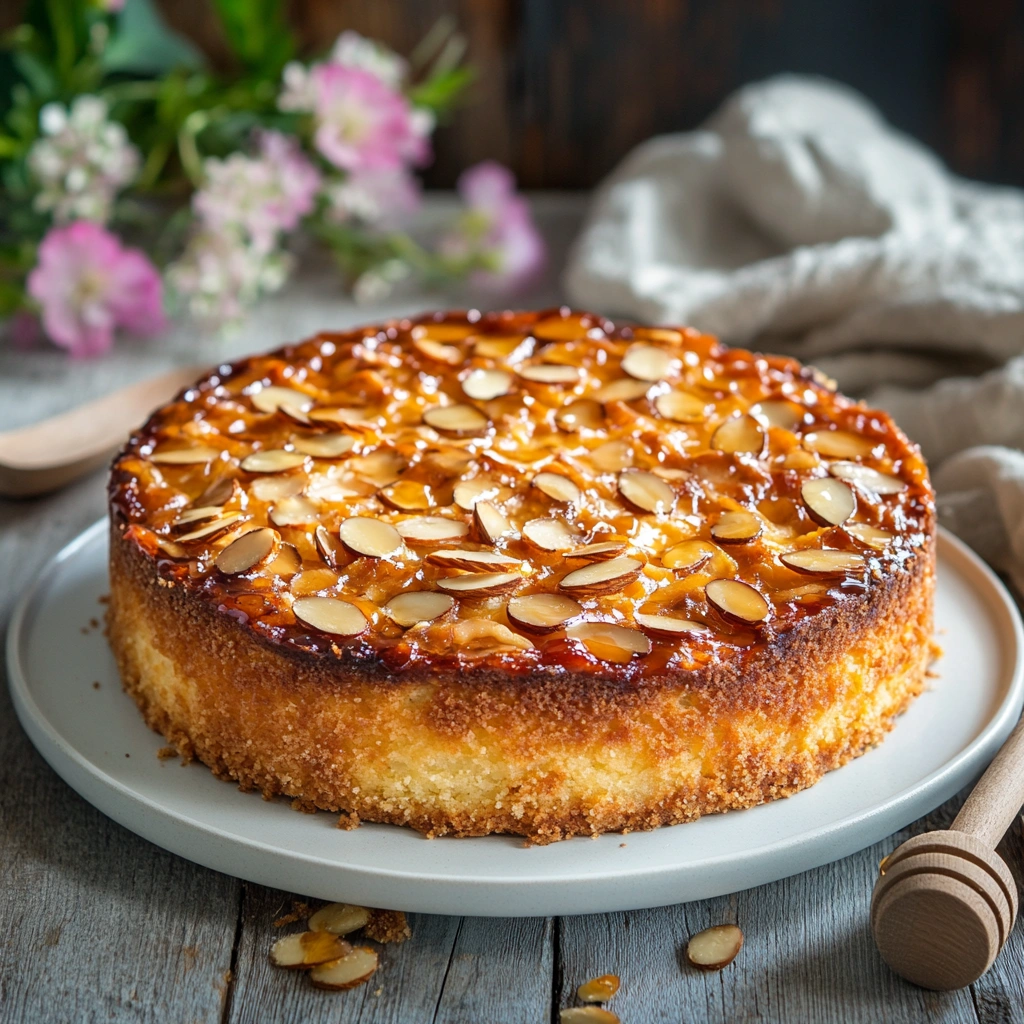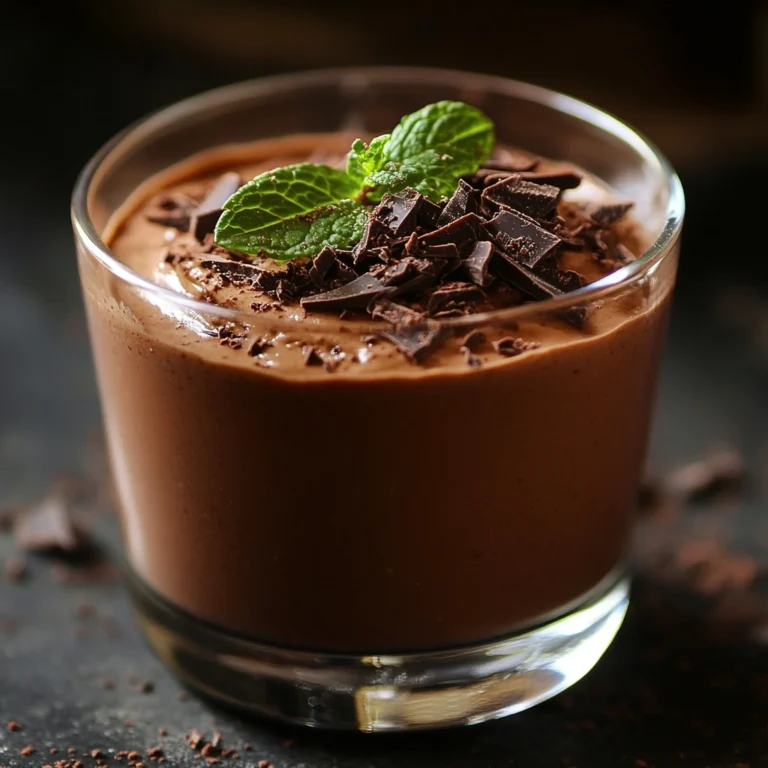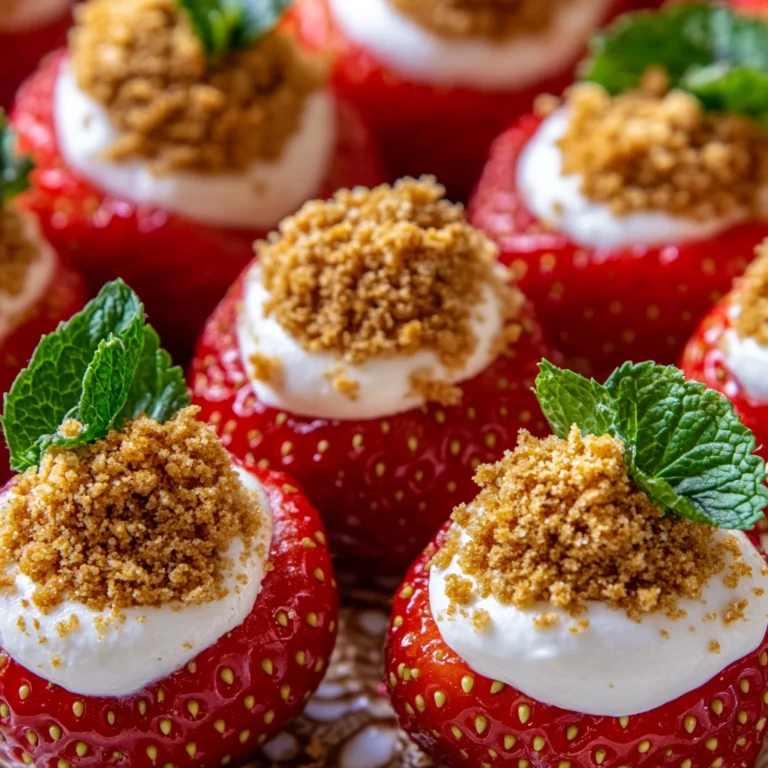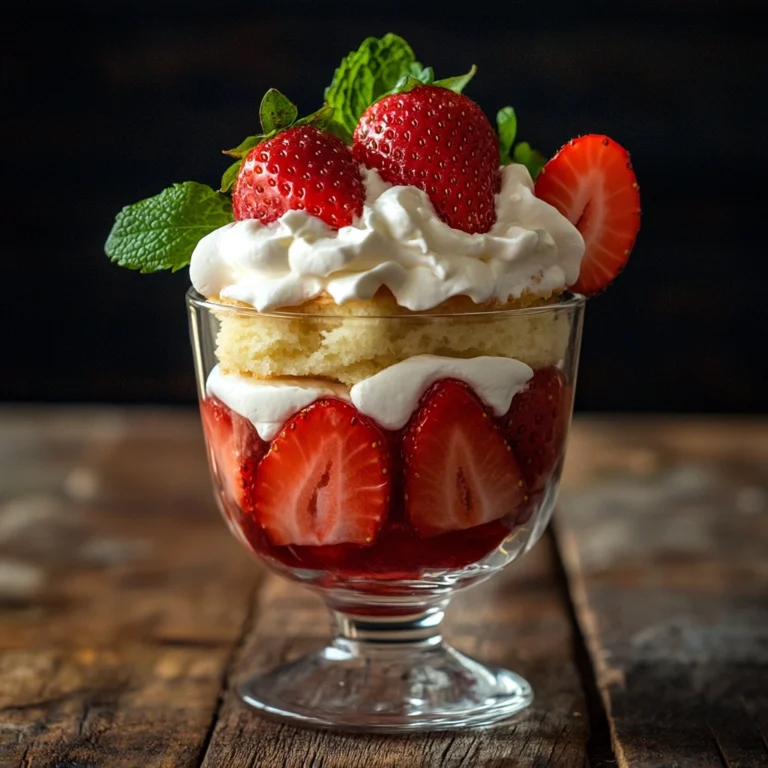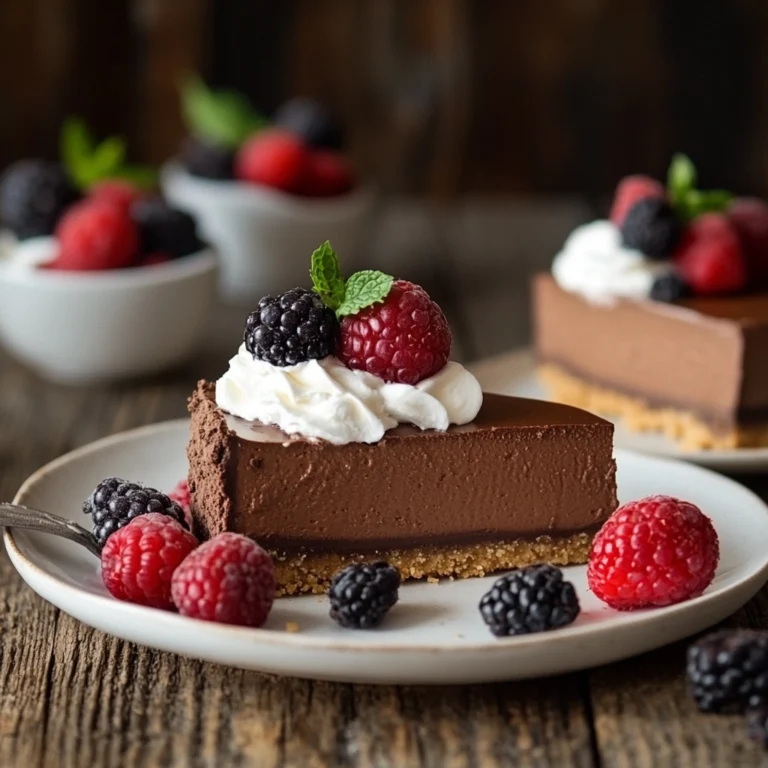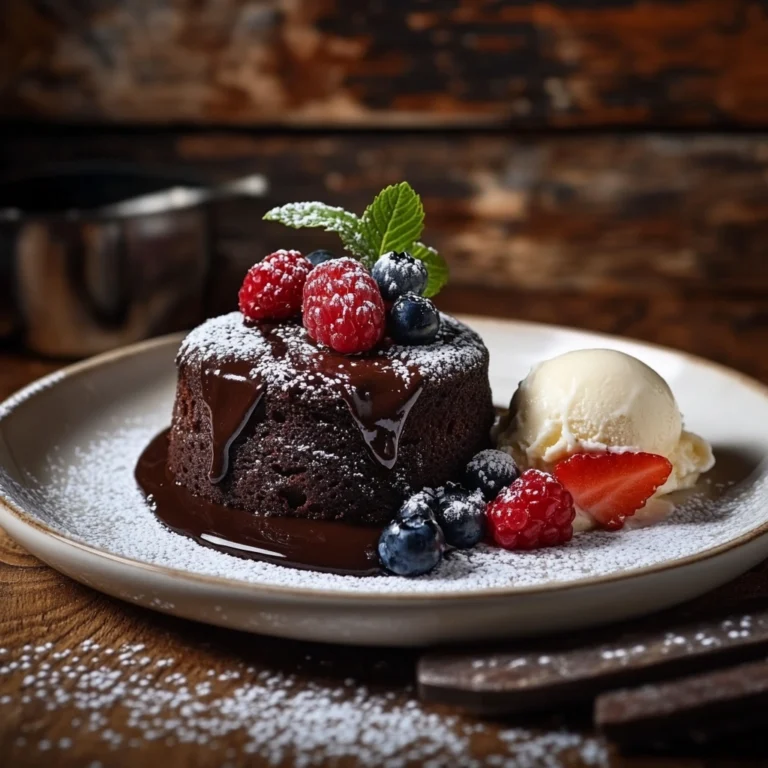Classic German Bee Sting Cake (Bienenstich) with Vanilla Custard
Introduction:
If you’ve never experienced a Classic German Bee Sting Cake (Bienenstich), you’re in for a sweet treat that will transport your taste buds to the heart of Germany. This delicious dessert has been a staple in German bakeries for centuries, and for a good reason. With its soft, yeasty dough, rich vanilla custard filling, and a crunchy almond-honey topping, it combines textures and flavors in the most delightful way. Whether you’re hosting a special occasion or simply craving a dessert that will wow your guests, this Bee Sting Cake is the perfect recipe to try.
Why You’ll Love German Bee Sting Cake:
There are many reasons why this German dessert is loved by so many, but what makes it stand out is its perfect combination of flavors and textures. The cake itself is light, airy, and just slightly sweet, providing the perfect base for the luxurious, velvety vanilla custard filling. The golden, almond-honey topping adds a crunchy and slightly caramelized finish that contrasts beautifully with the soft cake and creamy custard. Not only is this cake mouth-wateringly delicious, but it’s also surprisingly easy to make. Plus, with the rich history and tradition behind Bienenstich, it’s a dessert that brings a sense of connection to German culture with every bite.
Ingredients:
Before you start baking, gather all the ingredients to ensure your Bee Sting Cake turns out perfectly.
For the Dough:
- 2 cups all-purpose flour
- 1/4 cup granulated sugar
- 1 packet (2 1/4 tsp) active dry yeast
- 1/2 teaspoon salt
- 1/2 cup whole milk
- 1/4 cup unsalted butter, softened
- 2 large eggs
- 1 teaspoon vanilla extract
- 1/4 cup warm water (for yeast activation)
For the Vanilla Custard Filling:
- 2 cups whole milk
- 1/2 cup granulated sugar
- 4 large egg yolks
- 2 tablespoons cornstarch
- 1 teaspoon vanilla extract
- 2 tablespoons unsalted butter
And for the Almond-Honey Topping:
- 1/2 cup slivered almonds
- 1/2 cup unsalted butter
- 1/4 cup honey
- 1/4 cup heavy cream
- 1 tablespoon granulated sugar
Necessary Tools for German Bee Sting Cake:
To make this Classic German Bee Sting Cake, you’ll need the following tools:
- A stand mixer or hand mixer (to make the dough)
- Mixing bowls for combining ingredients
- A 9-inch round cake pan
- Saucepan for making the custard
- Wooden spoon or whisk for stirring
- Cooling rack for the cake
- Spatula for spreading the custard filling
- Knife for cutting the cake
Ingredient Swaps and Additions:
While this recipe is delicious as-is, there are a few ways to customize it to suit your tastes or dietary preferences.
- Flour Swap: If you’re looking for a healthier option, you can swap some of the all-purpose flour for whole wheat flour, but keep in mind that this may affect the texture of the cake.
- Milk Alternatives: You can use non-dairy milk (such as almond or oat milk) in the custard filling for a dairy-free version. Just make sure to choose an unsweetened option.
- Custard Flavor: While the classic vanilla flavor is traditional, you can also add a touch of lemon zest or orange zest to the custard for a citrus twist.
- Nut-free Version: If you have nut allergies, you can replace the slivered almonds with shredded coconut or skip the topping altogether.
- Sweetener Swap: You can replace the granulated sugar with a natural sweetener like honey or maple syrup, although it may slightly alter the flavor and texture.
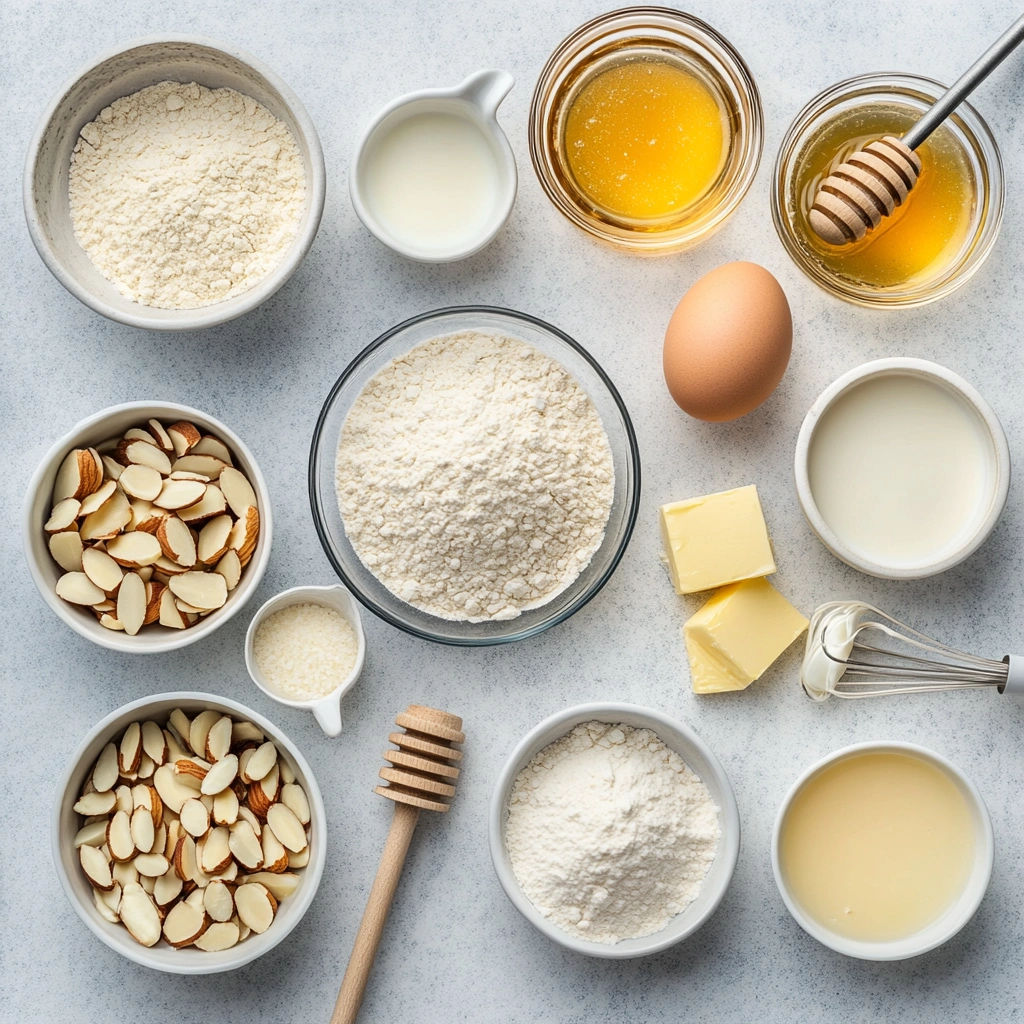
Step-by-Step Instructions:
Step 1: Prepare the Dough
Start by activating the yeast. In a small bowl, combine the warm water and a pinch of sugar, then sprinkle the yeast over the top. Allow it to sit for about 5 minutes until it becomes bubbly and frothy.
Next, in a large mixing bowl, combine the flour, sugar, and salt. Add the activated yeast mixture, followed by the milk, eggs, softened butter, and vanilla extract. Mix everything together until a dough forms. If you’re using a stand mixer, knead the dough for about 5 minutes using the dough hook until it’s smooth and elastic. If you don’t have a mixer, you can knead by hand for about 8-10 minutes.
Once the dough is kneaded, place it in a greased bowl, cover with a damp towel, and let it rise in a warm place for 1-1.5 hours, or until it doubles in size.
Step 2: Prepare the Custard Filling
While the dough is rising, start on the custard filling. In a saucepan, combine the milk and sugar and heat over medium heat until it starts to simmer (but not boil). In a separate bowl, whisk together the egg yolks and cornstarch until smooth.
Slowly pour a small amount of the hot milk into the egg mixture while whisking continuously. This will temper the eggs and prevent them from scrambling. Once the egg mixture is warmed, gradually whisk it back into the saucepan with the remaining milk. Cook the custard over medium heat, whisking constantly, until it thickens to the consistency of pudding.
Remove the custard from heat and stir in the vanilla extract and butter until smooth. Let the custard cool to room temperature before using.
Step 3: Bake the Cake
Once the dough has risen, preheat your oven to 350°F (175°C). Punch down the dough and turn it out onto a lightly floured surface. Roll it out into a 9-inch circle that fits your cake pan.
Transfer the dough to the prepared cake pan and press it into the bottom. Cover it with a towel and allow it to rise for another 20 minutes.
While the dough is rising, prepare the almond-honey topping by combining the butter, honey, sugar, and heavy cream in a small saucepan. Heat over medium heat until the butter is melted and the mixture is smooth. Stir in the slivered almonds.
Once the dough has risen, spread the almond-honey mixture evenly over the top of the dough. Bake the cake in the preheated oven for 20-25 minutes, or until the top is golden brown and the cake has risen.
Step 4: Assemble the Cake
Allow the cake to cool completely on a wire rack. Once cooled, use a serrated knife to slice the cake in half horizontally. Spread the vanilla custard evenly over the bottom layer of the cake, then place the top layer back on.
Slice and serve the cake, dusted with powdered sugar for an extra touch of sweetness.
Pro Tips for Success:
- Be sure to use room temperature ingredients for the dough and custard. Cold ingredients can interfere with the yeast’s rise and the custard’s consistency.
- Don’t skip the resting time for the dough. Allowing the dough to rise fully is key to achieving a light, fluffy cake.
- For the almond-honey topping, don’t overcook the butter and sugar mixture; you want it to be smooth and slightly golden but not caramelized too much.
- If you find the custard too thick, you can always add a little extra milk to thin it out.
Serving Suggestions:
This German Bee Sting Cake is perfect for many occasions. Serve it as a dessert at a family gathering, or as an indulgent treat with a cup of coffee or tea. It’s also a great choice for a birthday cake or any festive occasion. For an elegant presentation, garnish with fresh berries or a dusting of powdered sugar.
Storing and Reheating German Bee Sting Cake:
To store the Bee Sting Cake, keep it in an airtight container at room temperature for up to 2 days. The cake can also be stored in the fridge if you prefer a chilled dessert, but be aware that the texture of the custard may change slightly.
If you have leftovers and want to reheat the cake, gently warm it in the oven (wrapped in foil) for 10-15 minutes at 300°F. Be sure not to overheat the cake, as it can dry out.
For a quick and indulgent treat, try making our Molten Lava Mug Cake, which is perfect for satisfying your sweet cravings in no time.
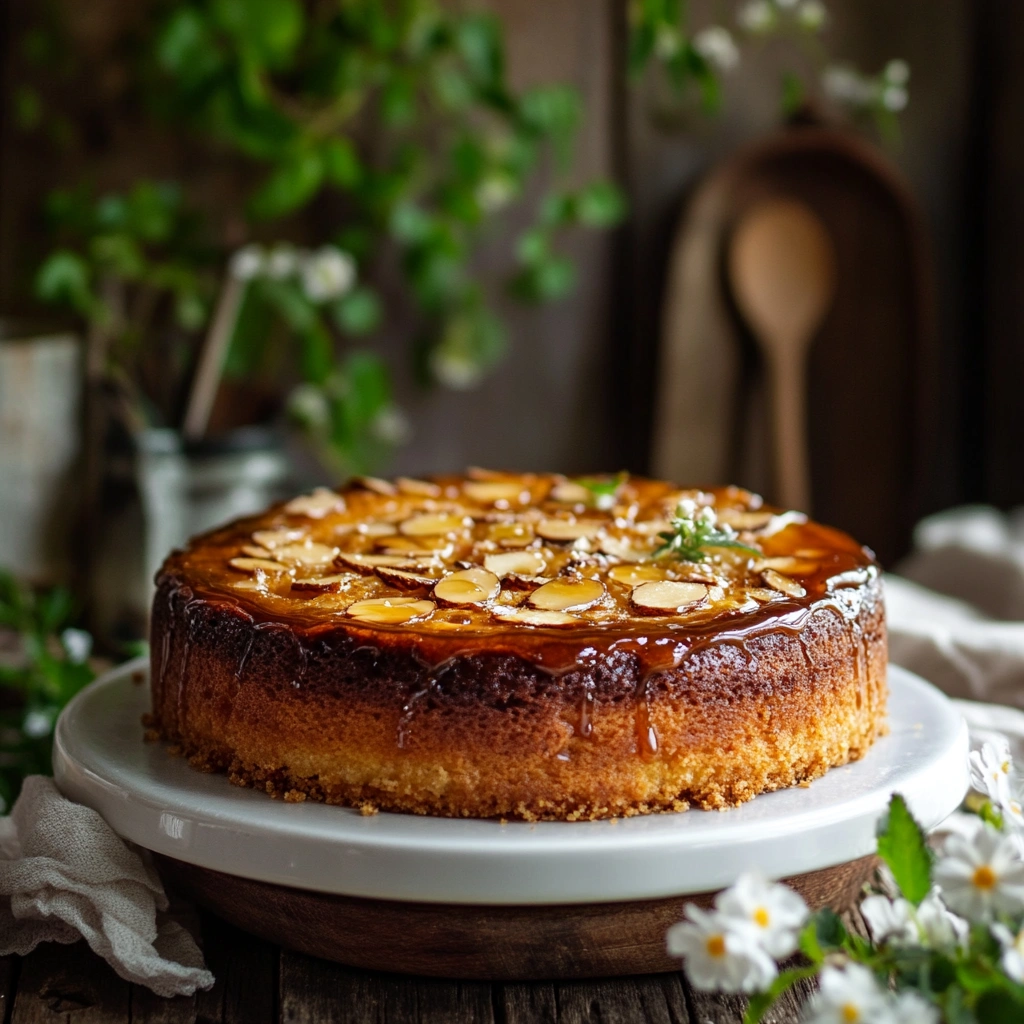
Nutritional Information:
Here’s a general breakdown of the nutritional information per serving:
- Calories: 350-400 kcal
- Fat: 20-25g
- Carbohydrates: 40g
- Protein: 6g
- Sugar: 18g
- Fiber: 2g
FAQs – German Bee Sting Cake:
- Can I make the Bee Sting Cake ahead of time?
Yes, you can prepare the cake the day before and assemble it just before serving. Store it in the fridge for best results. - Can I use a different nut for the topping?
Yes, you can use sliced hazelnuts or walnuts if you prefer. Just make sure they are toasted for the best flavor. - How can I make the custard filling thicker?
If you prefer a thicker custard, you can increase the amount of cornstarch slightly. - Is this recipe suitable for freezing?
Yes, you can freeze the unassembled cake layers (dough and custard), but be sure to wrap them tightly. The topping may not freeze well. - Can I make this without eggs?
You can substitute the eggs in the dough with a flax egg, though it may slightly alter the texture. For the custard, consider using a vegan custard recipe or coconut cream.
Conclusion:
This Classic German Bee Sting Cake (Bienenstich) with Vanilla Custard is a dessert that’s sure to impress with its sweet, rich flavors and creamy filling. With a little bit of effort and time, you’ll have a showstopper of a cake that’s perfect for any occasion. Whether you’re new to German baking or a seasoned pro, this recipe is an absolute must-try.
Moreover, for a detailed and traditional take on this classic dessert, check out this Bee Sting Cake (Bienenstich) recipe on AllRecipes.

